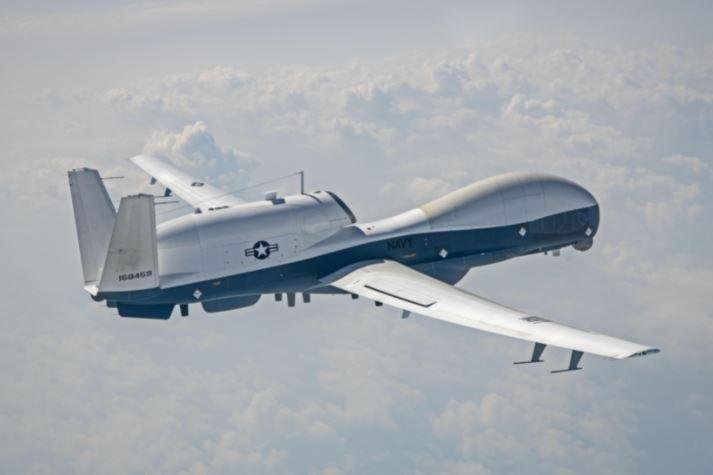An MQ-4C Triton unmanned aerial vehicle with IFC-4-level hardware and software upgrades was successfully tested this week, the U.S. Navy announced. Photo courtesy of Northrop Grumman/U.S. Navy
July 30 (UPI) -- An MQ-4C Triton unmanned aerial vehicle equipped with an upgraded multi-intelligence configuration was successfully tested this week, the U.S. Navy announced.
The test is regarded as a milestone in the improvement of the vehicle, the U.S. Navy's premier high-altitude long-endurance, or HALE, maritime intelligence, surveillance and reconnaissance platform, builder Northrop Grumman said in a statement on Friday.
While MQ-4Cs currently deployed by the U.S. Navy and the Royal Australian Air Force include multi-mission sensors in a configuration known as Integrated Functional Capability 3, or IFC-3, the test involved IFC-4, which includes improved hardware and software configurations for improved sensor feedback, the Navy said on Thursday.
"This flight proves that the program is making significant progress toward Triton's advanced multi-intelligence upgrade and it brings us closer to achieving the initial operational capability milestone," program manager Capt. Dan Mackin said in a press release.
The unmanned aircraft, over 47 feet in length and with a wingspan of nearly 131 feet, is powered by a Rolls-Royce turbofan engine and flown by four personnel from a ground station.
It was designed for high-altitude intelligence, surveillance and reconnaissance missions, in regular orbits, to complement the P-8 Poseidon patrol aircraft, which is a modified Boeing 737.
Two MQ-4C aircraft in the IFC-3 configuration are currently deployed to the U.S. Navy's 7th Fleet.
In May, it was announced that the two will be moved from Guam to Japan, with the Japanese defense ministry citing an "increasingly severe security environment surrounding Japan."
At least 68 more MQ-4C Tritons, with the IFC-4 upgrade, are planned.
"The multi-intelligence configuration of Triton will completely revolutionize how the U.S. Navy and Royal Australian Air Force conduct maritime patrol and reconnaissance missions," Doug Shaffer, vice president and program manager for Triton programs at Northrop Grumman, said in a press release.
"Multi-intelligence capabilities, coupled with Triton's long-range sensors and 24-hour endurance, will enable an unprecedented amount of maritime situational awareness to inform real-time decision making at tactical to strategic levels," Shaffer said.















